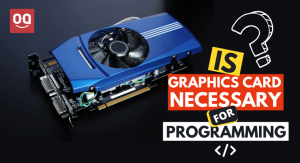Making the right choice between a curved and a flat monitor can be a daunting task for any consumer. Both types of monitors have their own unique advantages that can help you make the best decision for your needs. Whether you want to improve your gaming experience, watch movies, or just browse the internet, understanding the differences between curved and flat monitors can help you make a valuable purchase.
The Basics of Curvature Ratings
We’ll begin by discussing the meaning of various curvature radius ratings (1000R, 1500R, 3800R, etc.). The screen’s curvature will be steeper if the number before the ‘R’ is smaller.
The value 1500R, for example, indicates a radius of 1500mm (or 1.5 m). A group of 1500R curved monitors can be used to make a circle with a radius of 1.5m.
Also, the degree of curvature indicates how far away you should be. A 2000R curved monitor’s benefits are maximized at a viewing distance of no more than 2 meters.
Samsung’s Odyssey gaming monitors are the first to include a 1000R curvature, which is meant to mimic the shape of the human eye for a more realistic gaming experience.
Distinguishing between Curved Monitors and Curved TVs
The typical curvature of a curved monitor is around 1500R, whereas the average for a curved TV is 4000R. Since you’ll likely be sitting farther from a TV than a monitor, this makes sense.
The issue with TVs, however, is that in order to get the most out of a curved screen, viewers must be seated right in front of it, which is difficult, if not impossible, when there are many people in the room.
Also, the curvature would make it difficult for viewers to see the full screen at the far ends of a room. In light of this, it’s easy to see why most people feel a curved TV’s added expense is unjustified.
As curved monitors are designed for a single viewer, these issues do not arise. In addition, curved screens are not always more expensive than flat ones. Budget gaming monitors with curved panels are often used since they are less expensive than flat-panel alternatives.
Of course, the size and curvature radius of the display determines how practical the curvature actually is. Due to their compact form factor, the curvature of 1500R or 1800R displays is hardly evident on 24″ and 27″ curved monitors.
Curved monitors of 32 inches or more in size, particularly those with an incline of 1500R or more, draw more attention to the curvature; nonetheless, it is still not strictly necessary.
In other words, if you’re only interested in the curvature of a 24 “-32” widescreen (16:9 aspect ratio) monitor, you shouldn’t buy it.
The Benefits of Curved Monitors
The curvature is only really necessary for an immersive viewing experience on ultrawide (21:9) or super ultrawide (32:9) monitors. The greater width of these monitors allows the screen’s curvature to draw the edges closer to the user, filling in more of the user’s field of view.
This not only eliminates distortion at the corners of the screen but also gives the impression of greater depth to the image since more of the screen can be seen without the viewer having to move their eyes or head.
Conclusion
When it comes to choosing between a curved and a flat monitor, it is important to consider the purpose for which it is needed and to decide which type of monitor best fits the user’s preferences. For example, curved monitors are best for a wide field of view and immersive gaming, while flat monitors are better for office work and productivity applications. Curved monitors are also known to reduce eye strain and offer a wider viewing angle than a flat monitor.
Ultimately, it is up to the user to decide which type of monitor best suits their needs.
If you are looking for a reliable source of electronic product reviews, look no further than our write-ups here at TechnoQia. We are an online media publisher committed to unbiased reviews, guides, and a variety of other content. Feel free to read all our electronic guides and reviews, and you will never have a bad purchase moving forward.





